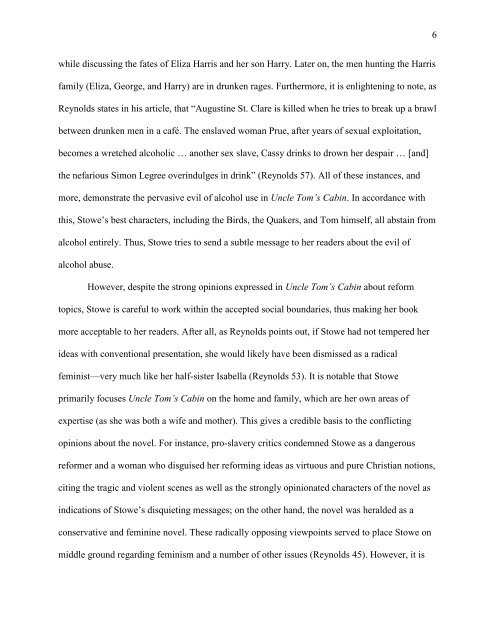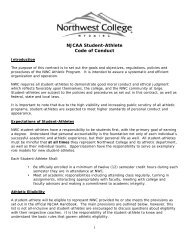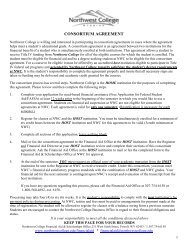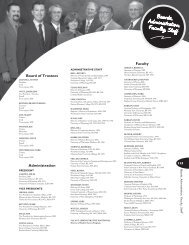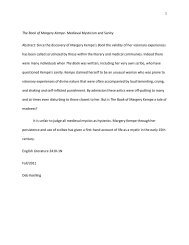Uncle Tom's Cabin
Uncle Tom's Cabin
Uncle Tom's Cabin
You also want an ePaper? Increase the reach of your titles
YUMPU automatically turns print PDFs into web optimized ePapers that Google loves.
6<br />
while discussing the fates of Eliza Harris and her son Harry. Later on, the men hunting the Harris<br />
family (Eliza, George, and Harry) are in drunken rages. Furthermore, it is enlightening to note, as<br />
Reynolds states in his article, that “Augustine St. Clare is killed when he tries to break up a brawl<br />
between drunken men in a café. The enslaved woman Prue, after years of sexual exploitation,<br />
becomes a wretched alcoholic … another sex slave, Cassy drinks to drown her despair … [and]<br />
the nefarious Simon Legree overindulges in drink” (Reynolds 57). All of these instances, and<br />
more, demonstrate the pervasive evil of alcohol use in <strong>Uncle</strong> Tom’s <strong>Cabin</strong>. In accordance with<br />
this, Stowe’s best characters, including the Birds, the Quakers, and Tom himself, all abstain from<br />
alcohol entirely. Thus, Stowe tries to send a subtle message to her readers about the evil of<br />
alcohol abuse.<br />
However, despite the strong opinions expressed in <strong>Uncle</strong> Tom’s <strong>Cabin</strong> about reform<br />
topics, Stowe is careful to work within the accepted social boundaries, thus making her book<br />
more acceptable to her readers. After all, as Reynolds points out, if Stowe had not tempered her<br />
ideas with conventional presentation, she would likely have been dismissed as a radical<br />
feminist—very much like her half-sister Isabella (Reynolds 53). It is notable that Stowe<br />
primarily focuses <strong>Uncle</strong> Tom’s <strong>Cabin</strong> on the home and family, which are her own areas of<br />
expertise (as she was both a wife and mother). This gives a credible basis to the conflicting<br />
opinions about the novel. For instance, pro-slavery critics condemned Stowe as a dangerous<br />
reformer and a woman who disguised her reforming ideas as virtuous and pure Christian notions,<br />
citing the tragic and violent scenes as well as the strongly opinionated characters of the novel as<br />
indications of Stowe’s disquieting messages; on the other hand, the novel was heralded as a<br />
conservative and feminine novel. These radically opposing viewpoints served to place Stowe on<br />
middle ground regarding feminism and a number of other issues (Reynolds 45). However, it is


